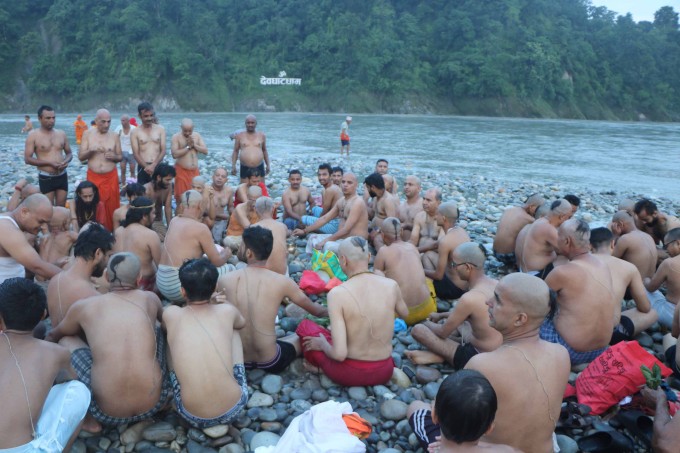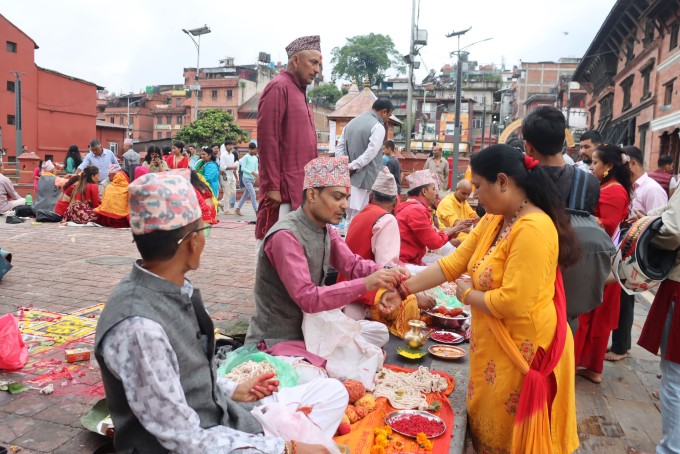It was the advent of the microwave that launched the first wave of convenient 'heat and eat' meals in India. The (then) 'hi-tech' gadget didn't lend itself to multi-stage cooking of Indian recipes and after resting a while as a baby white elephant was deployed in a different role. Left-over delicacies or, those ordered from takeaways could be put in the microwave for vessels and 'nuked' to be enjoyed piping hot. Some used it for cooking potatoes others for warming milk or tea and coffee. Truth be told, the micro hasn't made much headway since those early days. It should be credited though with popularising the idea of 'heat and eat'.
In the western world, where the Idiot Box had reduced audiences to couch potatoes, TV dinners bought from the supermarket became addictive. Monotonous and lacking in nutrition these may have been but there is no denying that they liberated millions from chores in the kitchen.
Canned foods had found a mass market in the aftermath of the Second World War and steady advance in technology has given enough thrust to heat and eat recipes.
NRIs from Punjab relied on 'sarson da saag' in tins to supplement lunch or dinner with a bit of nostalgia but this was not even a pale shadow of the real stuff.
What revolutionised it was big companies getting into the act harnessing 'state of the art' food preservation and packaging breakthroughs in India. ITC launched 'Kitchen of India' selection offering best sellers from its iconic restaurants like Bukhara, Dum Pukht and Dakshin. There were no artificial colours, flavours or preservatives added and all one had to do was to follow the instructions on the pack and let the heat give finishing touches to the treat.
The cost of dining at home on Dal Bukhara or Chicken Chettinad was considerably lower than at the restaurant.
Others were quick to follow suit. It was not only the neighbour butchers who were selling pre-marinated chicken tikka and tangri who were challenged by competition. Suddenly the shelves in stores were laden with colourful packets of combo meals like sambar rice and prawn rice offered by the Taste Company. These were priced between Rs. 100-150 and portioned to quell the hunger pangs of a single person studying or working away from home tired of the meals supplied by the tiffin service.
The game changed with the entry of MTR and Haldiram into the arena. The consumer had a far greater choice now--from a quick fix breakfast to a favourite ethnic /regional delicacy. Paneer-mutter to Makhni Paneer, Rajma to Kolhapuri Mutton. Poha, Upma, Dal Chawal, Khichdi were all within reach not only on terra firm but also while flying high. Many airlines now offer their passengers a meal that cooks itself after a small measure of hot water is poured into a bowl and kept aside for 5-7 minutes. Parents of kids long addicted to cup noodles found themselves drooling over the fresh food made before their eyes sans harmful additives.
The Japanese who had started the trend came up with self-heating food packaging. You pulled the cap and water within it was released on a lime packet at the bottom. The heat generated warmed the pre-cooked meal. This eye-popping wizardry added to the cost and didn't suit Indian recipes. That perhaps is the reason that some Indian companies tried to emulate but failed to carve out even a small niche market.
Most Indians prefer to have food cooked at home. 'Heat and Eat' may be convenient but is seldom satisfying. Poha and Upma in any case take very little time and effort. Even aspirational dishes like Daal Bukhara begin to jade the palate after some time. This is why the 'ready to cook' concept appears to be an idea whose time has come.
Quickish, a company operating out of Hyderabad, has a wide range of products including perennial favourites like Daal Makhni, Rajma Masala, Butter Chicken, Murg Malai Tikka et al. but pushes the envelop much farther. You can order Kashmiri Alu Dum and Railway Mutton Curry, Safed Maans or Chicken Halim as well. The menu is not limited to deshi recipes. Korean Grilled and Moroccan Fish, along with Chicken Cilantro and Chicken in creamy mint sauce, Cottage cheese steaks in pesto tempt one to experiment with the pan Asian, Mediterranean or European flavours. The prices range between Rs. 375- 575. The quality of ingredients used is excellent, the portions generous--enough for two with a normal appetite!
The 'Ready to Cook' products remove all the preparatory chores that consume time and involve skills acquired with practice. They are marinated expertly and are free of artificial colours, flavours and preservatives. They take almost as much time to cook from scratch as heat and eat meals and though their shelf life is much shorter (they have to be consumed within 3-4 days after purchasing and have to be stored in the refrigerator till used) they provide a far more satisfying dining experience.
We have a gut feeling that this is the trend that will rule the culinary waves in days to come. One hopes that packaging tech will enhance the shelf life of products and imitators who follow to flatter the pioneers will not lower the bar.
Disclaimer: The views expressed in the above article are that of the writer and do not reflect that of ANI.
READ ALSO:







